
[accordion]
[section name=”What kind of sewing machine do you use?”] My main sewing machine is a Bernina 440QE, which I adore. I realize that a Bernina is a pricey machine, and probably not really a starter machine, but it is hands-down the best sewing machine I have ever used (and I include my stalwart 1969 Singer cast-iron machine in that analysis). Previously, I sewed on a Viking Rose machine that I inherited from Sandra (San-draaaaaa!), but it was sadly damaged when I traveled to Ohio to shoot photos for my first book. (I don’t know if it can be repaired or not, so she’s in her travel case until I’m ready to either fix her or let her go–since Sandra also gave me nearly every presser foot Viking ever manufactured for that machine, it has been a little tough to open up my claws and say good-bye to that one.)
I also have a Singer Confidence Quilter as a back-up and travel machine. I own a Singer 1934 treadle sewing machine in need of minor repairs that I have plans to rejuvenate when we finish our basement and it can be displayed in the manner to which it is entitled. Some days, I dream of owning a Featherweight, but I’m not sure I’d really use it much, and it currently would have nowhere to live, so that seems frivolous.[/section]
[section name=”Do you have a serger? Do I need to get one?”]I do have a serger. Mine is a Viking Huskylock 936, also from Sandra. Truthfully, though, I hardly ever use it for more than finishing seams, and have never truly used it in the manner it was designed. A serged seam is never as strong as a sewn seam, so I was taught to always sew first and serge separately, rather than using my serger as a one-stop seam machine (a practice I strongly discourage, BTW). I much prefer to finish seams with either a French seam or an overcast stitch, although I do sometimes serge separately before sewing the seam on my machine, to finish the seam edge, or if I’m hurrying, I’ll sew the seam and then serge off the seam allowances. So the answer to the second part of the question: no, you probably don’t need a serger, at least not to start, and I absolutely don’t think that NOT having one will in any manner stand in the way of you sewing, clothing or otherwise. There are lots of really cool things that sergers are capable of adding to your skill set and toolbox, and they’re totally worth checking out, but none of them is essential to good sewing. [/section]
[section name=”Can you recommend a sewing machine?”]As a starter sewing machine? Sure! If you’re looking for a Forever Machine, I’ll be totally honest and say it’s worth saving your pennies and investing in a Bernina–I really do love them that much. They’re on the expensive side, so while you can find them used or refurbished (look for a dealer near you and many of them have trade-ins available that have hardly any mileage on them and usually can be purchased with a warranty), I totally get that it’s out of the budget for some, or that you might not want to bite off that bug a chunk when you’re just starting out sewing and not even really sure you love it yet. If that’s the case, there are a number of really great “starter” machines available that my students have had great success with over the years, and that won’t break the bank. The ubiquitous Brother Project Runway edition is a great value, and should last you about 5 years, depending on how often you sew. It tends to have some tension issues (see my post here), but those are generally the ONLY issues I’ve found with these machines, so once you work out what to look for, you should be good to go. I also like the Singer Confidence machines, which are slightly heavier and fancier than the Brother, but that are very intuitive to use and make very pretty stitches. You could easily have a Singer for 10 years if you take good care of it–and maybe longer, if you’re an infrequent sewer.[/section]
[section name=”Can you recommend a good sewing class or a place to improve my sewing skills?”]Obviously, I’ll start by suggesting my online sewing classes, all of which are taught through a combination of video, audio, downloads, PDF and live chat. I genuinely think they’re the best suite of online sewing classes available on the web, and have worked hard to cover a ton of foundational skills and sewing practices in a way that’s fun and lighthearted and approachable for someone of any background and experience. Best of all, you can take them anywhere you are, regardless of geography! For classes in person, your local Modern Quilt Guild or independent fabric shop will almost certainly offer classes and workshops, or have a list of likely places near you where you can locate a local teacher who will guide you into the wilds of sewing.[/section]
[section name=”Can you recommend a good sewing book to help me brush up my skills or get started sewing?”]You mean, besides Stitch by Stitch and Stitch Savvy? Sure! Check out this post about the sewing books I consider essential for your personal craft library.[/section]
[section name=”Where do you buy your fabric?”]I primarily purchase my fabric–and I mean, better than 90% of it–through online sources. I generally stick to my six favorites:
On occasion, I’ll also visit other shops, like Denver Fabrics or Fabric.com, and I certainly wouldn’t turn down anything from Mood, but for the vast majority of my purchases, I stick to the six above. You can read my tips for shopping for fabric online right here, or learn more about matching colors when shopping for fabric online here.[/section]
[section name=”How did you learn to sew?”]I learned to sew because, in my family, it was not presented as an option: my mother sewed, and her mother, and her mother, and back and back. We are a long line of DIYers, so when we needed something, someone would just sew it up. I began hand-sewing around the age of 7, and remember my first largely-independent sewing project (a tragic pair of pants that I wore proudly) in tenth grade. I also did a theater major in college that required us to work in the costume shop, and that’s where I had the biggest sewing epiphanies–which I couldn’t have had at all if I didn’t already have the background in sewing that my family had given me. Read more about my sewing journey in Why I Sew.[/section]
[section name=”Where are you teaching next? I’d love to take a class with you!”]Wow, thanks! I’d love to have you come take a class with me–fun! Check out my live workshops page for info on where I’ll be teaching and lecturing next–most of the time, it’s here in Atlanta or nearby in the Southeast, but I do travel occasionally. If you or your guild would like to have me come teach a workshop or speak at a meeting, you can also check out my booking information.[/section]
[section name=”I have always dreamed of starting my own fabric shop. Can you give me any advice or tell me where to start?”]Owning a fabric shop was a really special three years of my life, and a part of my experience in this industry that I wouldn’t trade. It was tough work, though, and required a lot of hours and dedication. The folks who run quilt and fabric shops day-to-day really put their hearts into it and make amazing strides in bringing modern design and sewing to their communities, so I think it’s awesome if you want to own your own shop! I get a lot of requests from folks wanting to make their dream a reality, and there just isn’t enough time in the day for me to answer every one. I have developed a curriculum based on my shop-owning experiences that applies both to fabric shops and sewing lounges, and also to home-based crafty business. It’s called Crafty Business Basics, and you can learn more about it here.[/section]
[section name=”Do you mostly sew or mostly quilt?”]This is always such a funny question to me, because isn’t quilting a kind of sewing? I mean, aren’t they really the same thing? The answer is that I do both–I love quilting and am deeply proud of all the finished quilts I’ve made over the past few years, but my first love is garment sewing, and I think I will always gravitate back to that when looking for a new project. You can see my quilts in the quilt gallery and my garments in the garment gallery.[/section]
[section name=”Can you help me promote my online shop or new sewing-related product?”]I don’t currently accept sponsors on the blog, but I’m always open to ideas for how I can work together with other folks in the sewing world to promote and benefit one another. If you have a sewing-related book, business, or product that you think might be a good fit for the blog, contact me and we can discuss some ideas. I don’t have room on the blog to do lots of reviews, and I only review products that I really love and believe in and use myself, so it’s worth reaching out and seeing if we’re a match![/section]
[section name=”Do you sew with vintage patterns?”]Not really. Ever since our house flooded and I lost nearly 1000 vintage patterns (no, you did not read that number wrong), I haven’t really built up my collection in the same way. I found that I was hoarding them but not really sewing with them–they tend to come in really tiny sizes, and only one size to an envelope, so the images were intriguing, but in the end I made so many changes that I would often just be inspired by the vintage design and end up drafting my own pattern. You can learn more about my Flat Patternmaking online class if you want to do the same![/section]
[section name=”How do I take care of my sewing machine?”]I wrote a short series of posts full of video about how to maintain both a front-loading and a top-loading sewing machine. You can see them here, here and here, and learn about maintaining your serger here. You can also read this post rounding up sewing machine covers (you really ought to have one–and use it).[/section]
[section name=”Can I use one of your photos on my blog or site? Can I pin your images to Pinterest?
“]I’m glad you found something on Whipstitch to love! Feel free to use any unaltered image (or even two) for non-commercial purposes as long as they’re credited to Whipstitch and accompanied by a link back to the original post. If you’d like to use more than one image, it’s always professional and polite to ask permission first–it’s pretty easy to contact me so that we can discuss on a case-by-case basis. Tutorials should never be reproduced in part or in full without my consent. Images should not be used for galleries, landing pages, graphics, post series, or any other format that duplicates a large chunk of my content. Please understand that any duplication of text is plagiarism and constitutes a violation of federal and international copyright law–they take that stuff pretty seriously, y’all, so cutting-and-pasting is a huge no-no. You’re welcome to summarize and link to copy on my site, instead. Please feel free to pin any image to Pinterest directly from this page–rather than adding it to your own blog and pinning from there; it just keeps the links cleaner and helps everyone find what they’re looking for! For more information, read my copyright and usage policies.[/section][section name=”What are your favorite blogs to read? I want to be part of the online sewing community!”]There are so many! I never miss MADE or Made By Rae, and I love Tilly and the Buttons. I check in with Oliver + S pretty regularly, and Sewaholic writes a consistent and well-thought-out blog. I ahve been proud to sponsor Stitched in Color for years, and think Colette does an exceptional job on their blog.[/section]
[/accordion]

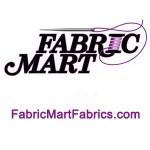
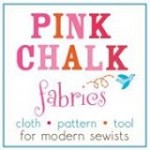
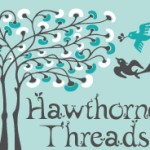
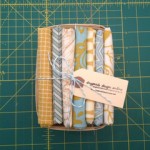
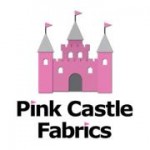
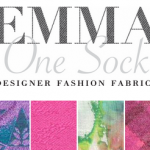
1 Comment
Thea
August 27, 2023 at 5:50 amHi Deborah,
I’ve just come across your beautiful quilt patch blankets and I’m in awe. I’ve been looking for the best way to look after my hiking patches and the quilts you made for your family are incredible. Is there any chance you would consider selling them? I’d love to have one myself for my adventure patches.
Kind Regards,
Thea Mason